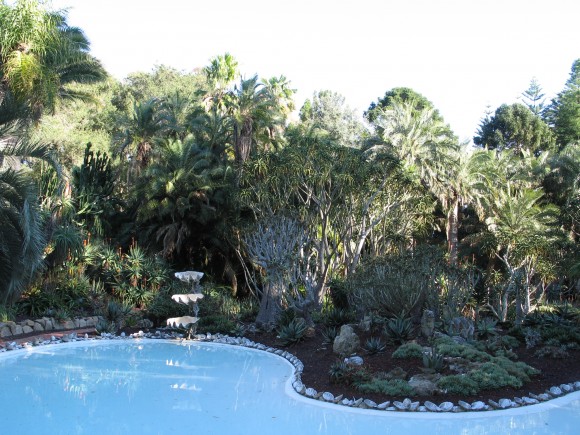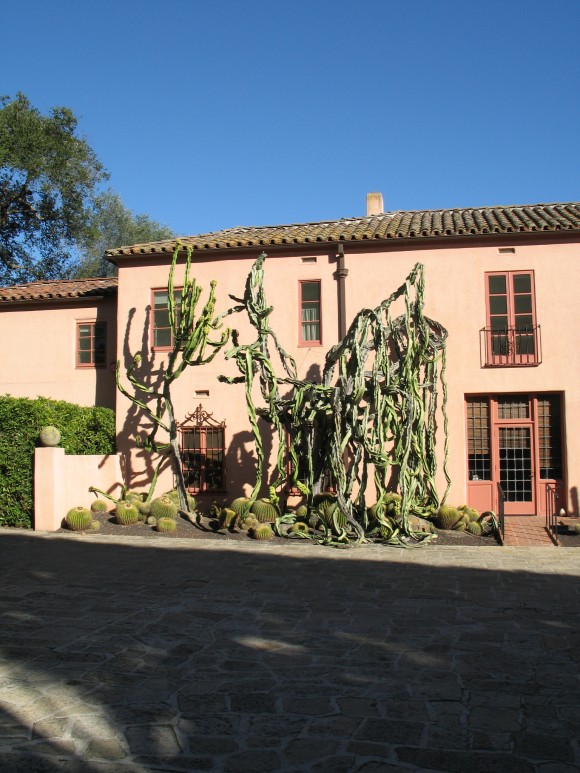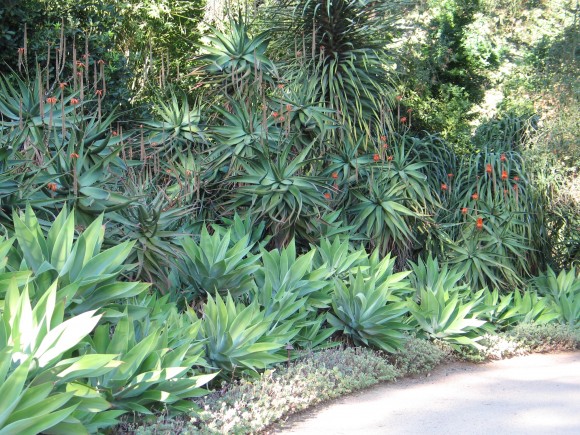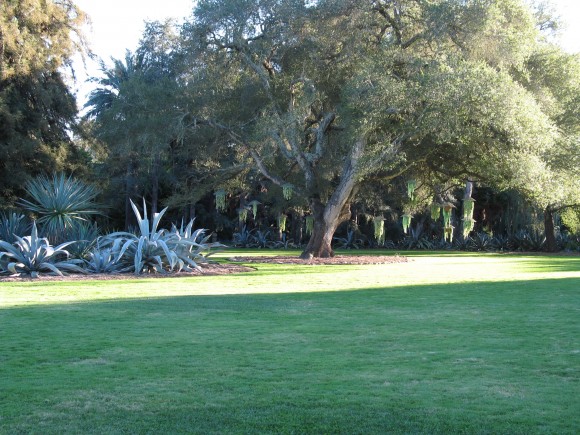This is the fifth week of a six part series on some of my favorite gardens based on their design combined with use of plants. Next week, I will review all of the gardens along with concluding the series with the sixth and final garden. Which one will be the sixth? Check in next week. I’m still debating which one the final one should be.
Ok, now back to this week. Let me set up this week’s garden with a story about my childhood in North Carolina. I told my wife this story last week and she was surprised. In the neighborhood my brother and I grew up in, we all wanted to be California kids. Sounds strange doesn’t it? A neighborhood of kids growing up in the suburbs of Raleigh, wanting to be like the surfing, skateboarding, and BMX bicycle riding kids of sunny, southern California. There was no Internet in those days of the early 80’s so we relied on magazines filled with waves, mountains, and palm trees. We would even tune into CHiPs each week to see the scenery of the land of our fantasy.

I share this story to tell you about my first trip to Los Angeles and an encounter with a garden of fantasy. I was on a trip out to look at plants and gardens. We drove north out of LA, up along the coast, past Carpinteria and into Montecito. That stretch of highway 101 along the Pacific Ocean is just out of those childhood fantasies of what California would look like. Big waves to the left, hills coming down to the ocean on the right. All along the way, you see a random Washingtonia palm just to remind you that you are in California. Eventually, we took the Montecito exit after passing what we were told were the coastal ranches of Oprah Winfrey and Kevin Costner. This entire stretch from Montecito to Santa Barbara is right out of a make believe movie set. Big, Spanish colonial homes flanked by agaves and palm trees seem to be everywhere once you reach the outskirts of Montecito.

Needless to say, I was already in a dream-like moment of Zen before we reached Lotusland in Santa Barbara. Lotusland is a 43 acre garden which was the former estate of Madame Ganna Walska. Madame Walska was a respected opera singer who began building the gardens in 1941. She worked with several gardeners and landscape designers to create the gardens that are now open to the public. The prolific use of cacti and succulents adds to the dream-like, Dr. Seuss-ian qualities that make up this garden. My favorite garden at Lotusland is the Aloe garden. Between the huge aloes, the central pool with abalone shells, and the massive Chilean wine palms (Jubaea chilensis), this garden will cause your mouth to droop open in awe. As you make your way around Lotusland, you become more and more amazed as the use of large, silver-leaved plants along with flowering bromeliads and tropicals.

There are many more evocative spots at Lotusland including: the Agave attenuata lining the driveway or the large cacti flanking the main house (they droop as if Picasso had painted them into the garden). If you love gardens, plants, and design, place Lotusland on the top of your must-see gardens. Be sure to plan ahead because of where it is located in a residential setting, they have limited parking and you must have reservations.

–Rodney
Photos: Rodney Eason
Lovely garden… very difficult to emulate anywhere else that doesn’t have a comparable climate…
I love this garden. Tom, you could use this basic idea and apply it to your home climate. I live in the pacific northwest. I think I’ll do something around my pool similar to the above photo but with native plants…ie ferns, salal, moss ect.
Great post thanks for the ideas!